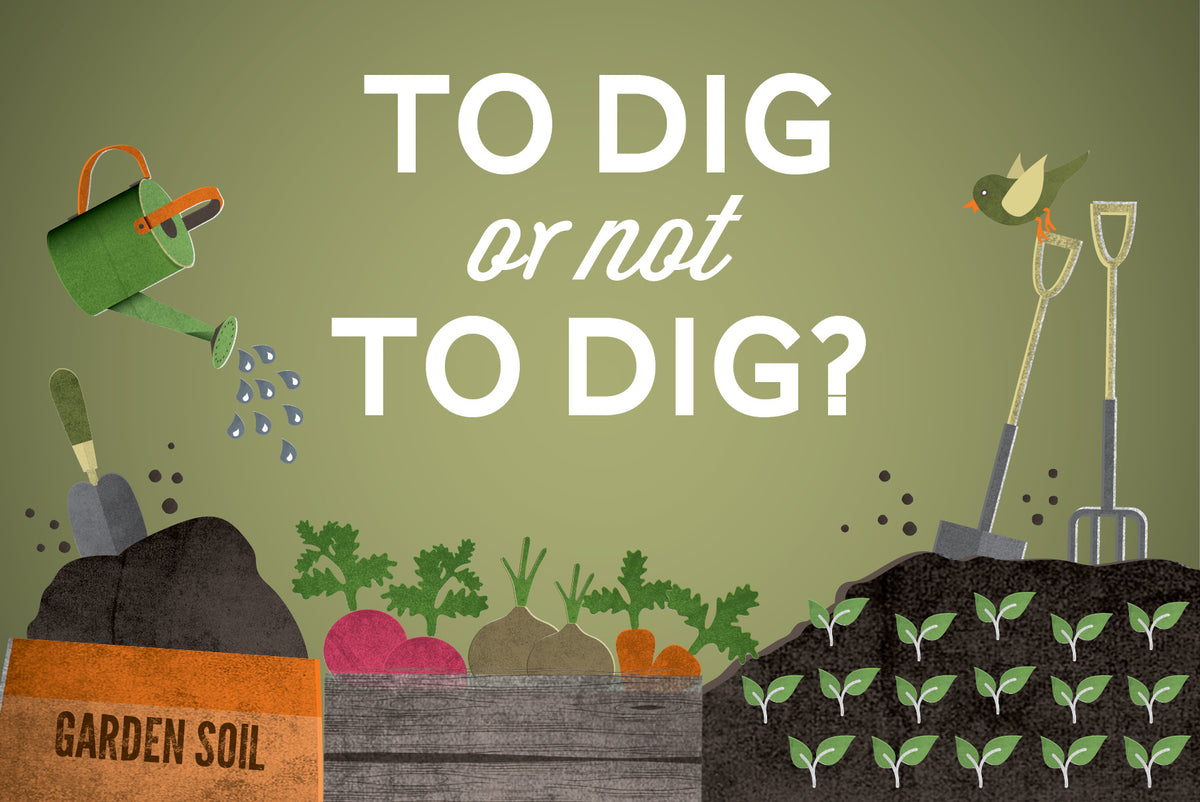Is the Traditional Method of Digging over Our Soil Now Outdated?

Traditionally, we dig over our beds and planters, turning the soil ready for planting. This helps to aerate the soil, break up hard clumps and disturb any weeds. However, over the last few years, a no-dig method of cultivation has taken the horticultural community by storm. The hashtag #nodig is becoming increasingly popular on social media, with big names in the gardening world adopting this process.
Digging, although traditional, can be disruptive for the microbial life that is vital to the health of your soil. So, should we really be digging our gardens?

Pros and cons of digging
Pros:
Digging is highly beneficial for restoring the structure that is lost when the wet soil is trampled and compacted. When the soil is broken up, fertiliser, lime and manure can be added, improving the overall quality of the soil. Turning the earth also allows you to discover and remove old tree roots and buried rubbish.
Also, cultivating the earth is often the fastest way to get nutrients from compost into the soil, so that seedlings get the essential nutrients they need to thrive.
Cons:
However, as well as being very hard work, and time consuming, digging also harms the microbes that are essential to soil life. It leads to moisture loss in the soil, so, if you choose to dig your soil, it is better to do so before the warmer spring weather arrives.
Some studies have shown that whenever soil has been dug, loosened, or turned over, it recovers from the disruption by re-covering with weed growth, increasing the number of weeds growing in that area.

Pros and cons of no-dig
Pros:
So, what’s the alternative? By not digging your soil, worms, fungi and other soil life are undisturbed and unharmed, maintaining a healthy soil life. This means there is less reliance on chemical fertilisers, which can save money, and is better for the environment!
When left undisturbed, the soil has less need to recover. Soil recovers by covering over with weeds. Less disturbance of the soil also reduces the number of clods (chunks of soil that are formed artificially) produced by digging. These clods act as a cover for pests such as slugs and snails.
Digging can be hard work and time consuming! By not digging your beds, and spending less time weeding, you can better utilise your precious time in the garden.
Cons:
A no-dig garden doesn’t mean no work, though. It takes time and patience to prepare your beds for this method. Whilst tilling your soil immediately incorporates the fertiliser or soil conditioner you are adding, a no-dig method takes much longer to reach a healthy balance.
You will need plenty of mulch, too, which can attract slugs and snails, depending on the climate you live in. The wetter the ground, the more likely you will be to suffer with these unwanted pests.
To dig, or not to dig?
No-dig gardening is certainly worth trying if you’re looking to reduce the amount of manual labour, or time spent pulling weeds. But, it might not always be the most effective method, especially if your beds have been un-tended for long periods of time, or you do not know what lies beneath the surface.
When first cultivating a bed, digging can be beneficial for removing tree roots and rubbish from within the soil. But, once the soil has recovered, a no-dig method can be adopted. Remember to research the best products for your soil, and do what suits you best. If your soil lacks nutrients, it might be best to turn the soil, and add in some soil conditioner. You can check out our range of fertilisers here.
What are your experiences? Let us know in the comments, we would love to hear from you.